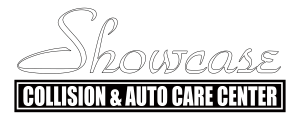Most auto collision repair shops are aware of the fact that the repair work on any vehicle only constitutes part of the job, and that other extra services, which are necessary, can make the vehicle owner even happier. The effort put into repairs by any specific collision shop can make the difference between a once-off and one you might visit over and over again.
Given the fact that most auto collision repair shops must follow a pre-set procedure, you can pretty much count on the fact that these repairs will be accomplished pretty much in the same way by any shop you work with. That means the real difference between many different repair shops is in the level of service and the level of customer satisfaction they can provide you.
When your car has been through some kind of collision work, there are a number of things you should check afterward, so that you can be completely satisfied with the service results on your preferred Auto Collision Repair Shop.
Before you Leave the Auto Collision Repair Shop
Before you drive away from the collision shop after the repair work has been done, you should definitely do a close visual inspection of the repairs, and you should also review them at a distance to make sure nothing looks out of the ordinary.
Specifically, you should check the paint in the affected area, so you can be sure that the texture and color match the rest of the vehicle. Make sure that the vehicle is clean and has no leftover remnants of the repair employees’ work.
Another thing you should do before leaving the collision shop is take a test drive to make sure that any mechanical repairs are in order, and that the vehicle is functioning normally. You should bring up the issue immediately rather than putting it off till later.
After leaving the collision shop, any issues which you identify probably won’t get to have repairs anytime soon, so it’s definitely to your advantage to take care of everything right on the spot.
Check the Airbag Replacement
If your vehicle got in a fairly serious accident, it’s very likely that the airbag will need a replacement.
There really is no way that a reputable collision shop would overlook the replacement of your airbag, but it is possible that a less than scrupulous dealer would deliberately overlook it.
Airbags can fetch a hefty price on the black market, and this could tempt some fly-by-night operators to charge the insurance company for an airbag, without actually installing a new one. This would also allow the repair shop to sell the airbag and bring in additional income for the same lack of new installation.
Make sure to check whether the airbag light indicator is on, or if you hear a hollow sound from your steering wheel when you knock on it lightly.
Ask around for Torque Issues
If your vehicle had any suspension parts replaced during the collision work, they will definitely need to be torqued so they are once again in compliance with the manufacturer’s specifications. If they don’t do this, it could cause an assembly to be loose, and that will have a huge negative impact on the performance of your vehicle, as well as how it handles.
You should make a point of inquiring with the collision shop about their procedures if you need to replace suspension parts, and you should also ask them to provide you with their torque specifications.
Look Out for Poor Alignment
If you notice that the car is pulling to one side or the other after it has been repaired, this is probably an indication that the car has poor alignment. This may be due to a misaligned unibody structure or a bent frame, but it’s something that you don’t want to have to deal with on an ongoing basis.
It’s fairly easy to straighten out some vehicles after they’ve been involved in a car crash, but others are more difficult to align. You don’t want to accept a poorly aligned car, because that will wear out your tires much more quickly, and you’ll find that you’re replacing them sooner than you should.
It will also contribute to poor handling of your vehicle, and it will be more difficult to keep it centered in a driving lane.
Be Aware of Car Clipping
The term ‘clipping’ refers to welding a whole used section from another vehicle onto yours after an accident. A couple of decades ago, this was a fairly common practice, but nowadays most vehicles have lightweight high-strength materials, and welding sections from other vehicles will frequently cause structural weaknesses to develop.
You should make a point of bringing this up with your collision center, to make sure they don’t have a policy that includes car clipping because that will be unsafe for your future driving.
Make Sure your Auto Collision Repair Shop used High-Quality Parts
Some insurance companies require that collision centers use aftermarket parts that might not be up to snuff with manufacturer specifications. This makes it important for you to find out exactly which kinds of repair parts were used when restoring your vehicle.
If the mechanic uses inferior parts to repair your vehicle, it could have a major impact on the performance of the vehicle, as well as what could happen if you get into another collision.
The reason insurance companies will insist on this is that used parts are far cheaper than original equipment parts are, and that means they can save on any amounts paid to your collision center. However, this is definitely not to your advantage, and it could even create a safety issue with your future driving of the vehicle.
For this reason, you should insist on seeing the invoice which details all the restoration of your vehicle, so you can be sure that there were high-quality parts.

